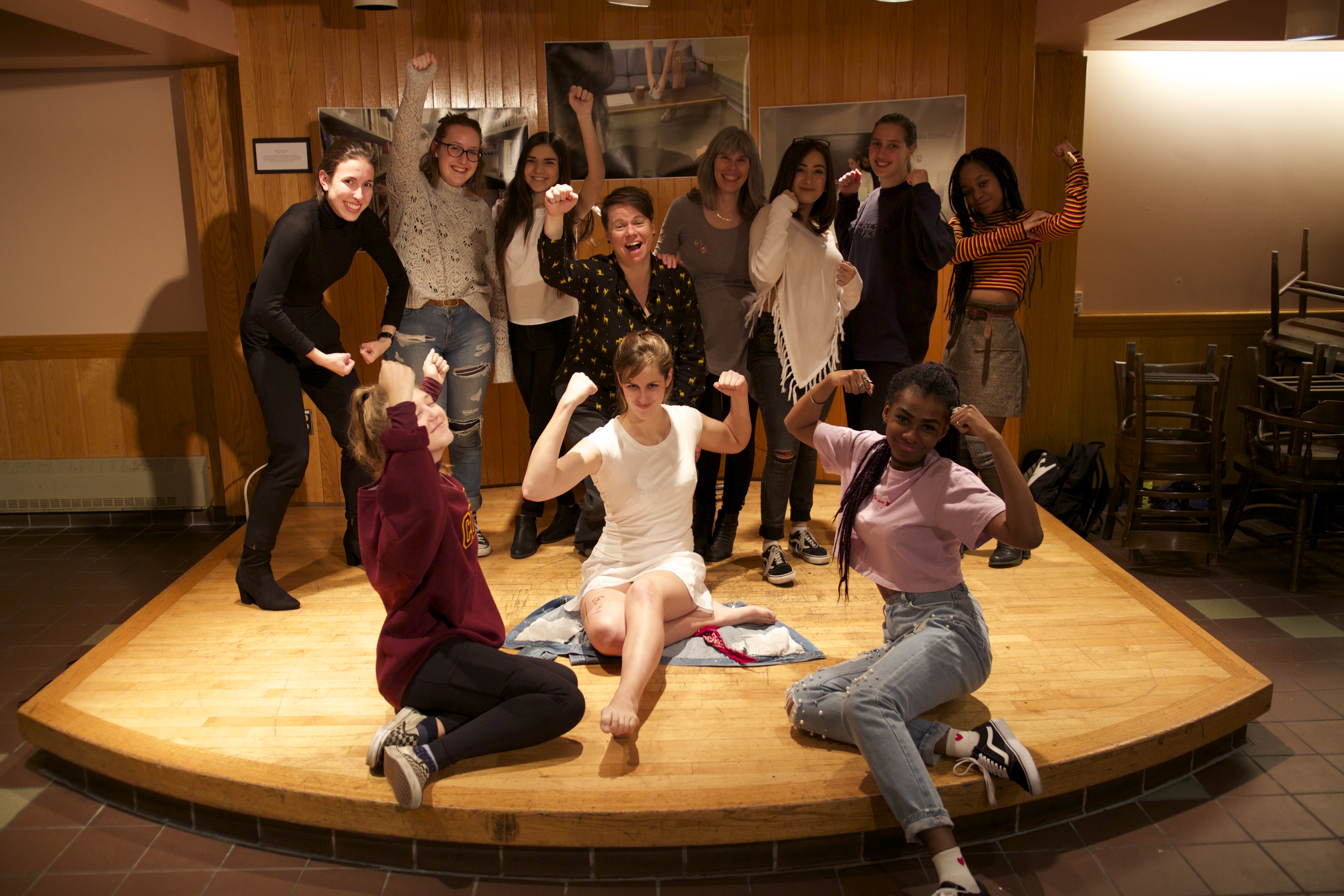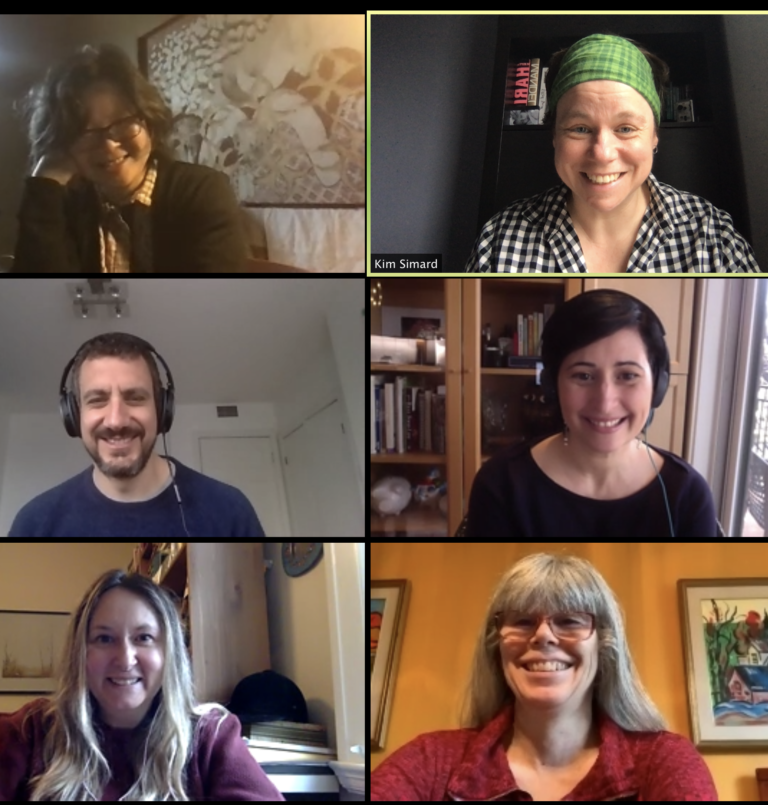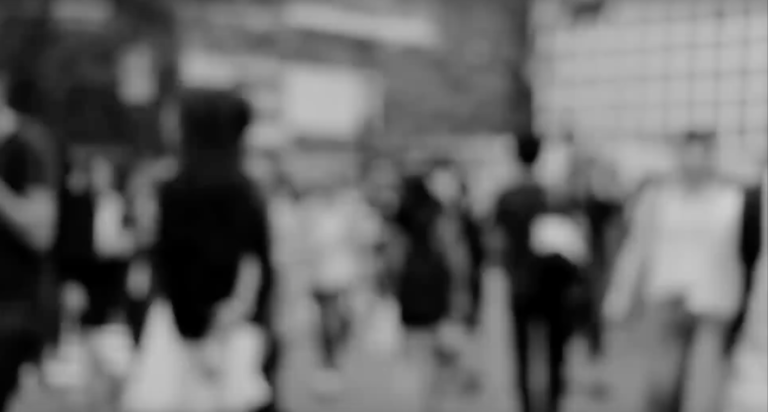For educators committed to exploring the problem of violence with our students, the classroom can quickly become a treacherous space. A class discussion of our society’s epidemic of violence against women can involve us teaching a diverse group of students that includes both victims and perpetrators of sexual assault. An effort to explore Canada’s devastating treatment of its Indigenous Peoples or the systemic nature of racism in our society will involve students both disadvantaged and privileged by these wrongs; the polarized divisions of the larger community are likely present in the classroom, simply waiting for a trigger to unleash them. Even discussing human suffering in far off places is challenging if one hopes to move their students beyond an intellectual understanding of the roots of the conflict towards a deeper emotional appreciation of the harm inflicted and its ethical implications. I still remember my sense of the size of the task ahead when one of my students wrote in a reflection piece early last semester that the Holocaust was “sad.” As Elaine Scarry explored in The Body in Pain, there are limits to how far we allow ourselves to go – or in fact can go – when it comes to imagining the pain of others. Psychological distancing and discomfort are thus a constant presence in discussions of human suffering, but this problem becomes magnified when we are asking students to reflect on cases of violence, where their own peoples have been the perpetrators or beneficiaries.
While discomfort in the classroom can provoke disengagement, awkward silences, and angry outbursts, educator Megan Boler in her influential 1998 book Feeling Power argued that an effective pedagogy, one that hopefully would open the door to individual and social change, should intentionally “disrupt and shatter” our students’ comfortable world views. Indeed, if we are to create spaces where our students can explore the problem of violence not simply as voyeurs or spectators but as ethically engaged citizens, we must promote both critical analysis and difficult self-reflection. To do this, Boler calls for the careful application of a “pedagogy of discomfort”. The discomfort arises through the process of questioning cherished beliefs and assumptions, the ideas and values that allow us to blame the victims, find reasons that legitimize — at least to some degree — the actions done, and/or deny our complicity.
There is no doubt that real change does not come in the absence of disruptions to our societal institutions and the ideas and values that sustain them. It is productive to encourage our students to reflect critically on their cherished ideas and values and on the processes through which they have been shaped, but such questioning can profoundly threaten one’s sense of identity and thus provoke defensive anger and other forms of psychological resistance. Boler’s recognition of this leads her to recommend that we tread gently, be compassionate and always avoid simplistic binaries of guilt and innocence. But “treading gently”, or in other words finding a balance between destabilizing our students’ existing world views, while creating the psychological safety needed for them to step out of their comfort zones, is very difficult to achieve.
Boler herself reflects more on the limits to a pedagogy of discomfort in her later works. In “Teaching for Hope: The Ethics of Shattering World Views,” she writes that “education is not effective if it is combative and alienating” (2013, 115), going on to say:
I am learning to accept that people will not go where they don’t want to go. For understandable reasons, students may not welcome the invitation to rethink their worldviews in ways that disrupt and shatter their comfortable status quo. Inevitably, each semester, I find myself encountering my own emotional investments and reactions to students who dig in their heels and blatantly refuse to engage in critical thinking. (120)
There is another danger with the pedagogy of discomfort, one that exists both for the educator and students. None of us are likely immune from the feelings of self-satisfaction and even superiority that come with pointing out the flaws of others and there is a risk of deepening resentments and creating new hierarchies in a classroom where some students are openly shamed or “called out” for views deemed unacceptable, albeit perhaps rightly so, by others. This is not a call to avoid provocative topics that if looked at in their full complexities will likely raise issues that challenge the views of many people on all sides, but rather, as Boler suggests, to tread gently. Social psychology has lessons for us as it shows how little it takes for us to feel that our identities are under attack, revealing the extent to which the denial of reality is not simple the preserve of those fearful of losing their privileges – the concept of white fragility comes to mind, but rather the norm for us all. As Stanley Cohen puts it, the interesting question is “not ‘why do we shut out?’ but ‘why do we ever not shut out?’”(249).
Cohen’s question asks us to take psychological resistance as an inevitable presence in the social justice classroom; with this perspective, a new approach is suggested: one that focuses less on challenging students directly about the ideas and values they hold and more on finding tools to creating transformative spaces where denial and other forms of psychological distance can be sidelined before they are even activated.
With the Resist Violence pedagogy, we have found ways of doing this by seeking to engage students at the same time intellectually, emotionally and creatively. We look for entry points into divisive issues that create connections across divisions such as race, gender and class that privilege some at the expense of others. We use art and storytelling to unexpectedly create spaces where realities that we have not noticed can be acknowledged. Perhaps most importantly, we look for ways to inspire our students to see the value in, and potential for, change – in their own ideas and values, but also in the world they inhabit. We draw insights from the theory and practice of nonviolence, integrating into our course content examples of how successful movements and activists have worked, often subtly, to draw our attention to the injustices of the status quo and inspire people with visions of a better alternative. Finally, we engage them in using their own creativity to resist the violence that shapes their lives.
In her 2013 article, Boler calls for educators to look beyond a pedagogy of discomfort and reflect on “the ethical implications of shattering someone’s familiar and comfortable worldview.” She wonders what we can “offer to replace the sense of self and values that may be threatened and displaced through a pedagogy of discomfort?”(128). Or, to phrase it differently, how we can inspire our students to go where “they don’t want to go?” One way is to remember the courage of those among us who have stood up against systems of injustice. In reflecting on the failure of the US South to confront their past of slavery and segregation, Bryan Stevenson, the founder of the Equal Justice Initiative, whose great-grandparents had been slaves in Virginia, says:
You should be proud of those white Southerners in Mississippi and Louisiana and Alabama who argued in the 1850s that slavery was wrong. There were white Southerners in the 1920s who tried to stop lynchings, and you don’t know their names. The fact that we don’t know their names says everything we need to know…. We can make that the norm we want to celebrate as our Southern history and heritage and culture. (quoted in Neiman 2019, 276)
Of course, we must use judgement here: such acts of resistance were rare, but their existence reveals the capacity for us to make our own ethical choices. To ask us to acknowledge our complicity in social harm, we need to see the potential of a response that moves us beyond feelings of guilt and shame. As discussed in much recent philosophical work dealing with social justice education, there is value in examining complicity more as a social and political problem that entangles us all than an individual one. As Michalinos Zembylas puts it: “[T]he the pedagogical question at hand is not ‘What can I, as a teacher, do to reaffirm students’ moral agency so that they admit their complicity?’ but rather, ‘How can I, as a teacher, move my students to take action in their everyday lives to refuse being complicit in social harm?”(2020, 326). Most of us after all have not chosen to be complicit in systems of cruelty and our support is often provided by thoughtless habit. What we can do is to accept our ethical responsibility to recognize the wrongs being done and embrace a shared responsibility to work for change. For Boler, moving beyond discomfort requires us to give our students critical hope, a hope that is not based on an unquestioning faith in the status quo, but rather an understanding of the hard work that needs to be done and the value in trying.
Boler, Megan. Feeling Power: Emotions and Education. New York: Routledge, 1999.
Boler, Megan. “Teaching for Hope: The Ethics of Shattering World Views.” Discerning Critical Hope in Educational Practices, edited by VivienneBozalek, et als., UK: Routledge, 2014.
Cohen, Stanley. States of Denial: Knowing About Atrocities and Suffering. Cambridge: Polity Press. 2001.
Neiman, Susan. Learning from the Germans: Race and the Memory of Evil. New York: Farrar, Straus and Giroux, 2019.
Scarry, Elaine. The Body in Pain: The Making and Unmaking of the World. New York: Oxford University Press, 1985.
Zembylas, Michalinos. “Re-Conceptualizing Complicity in the Social Justice Classroom: Affect, Politics and Anti-Complicity Pedagogy.” Pedagogy, Culture & Society 28.2 (2020): 317-331.



